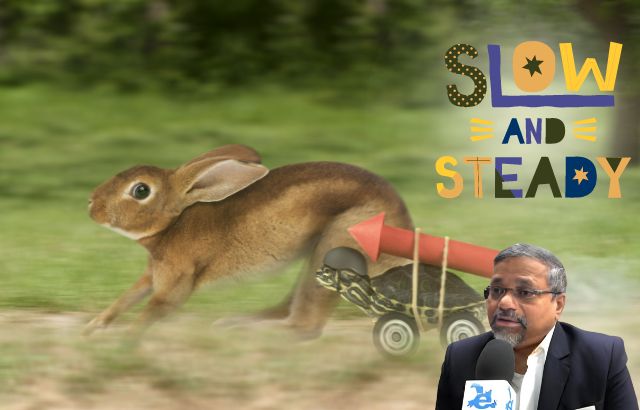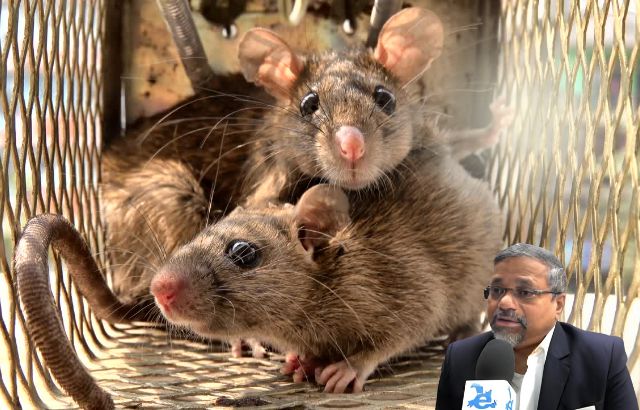Table of Contents
ToggleLongevity—the secret to a long, healthy life—has fascinated scientists, researchers, and dreamers for centuries. While modern medicine and technology have certainly extended human lifespans, there’s an unexpected source of wisdom in our quest for longevity: the animal kingdom. From tortoises to naked mole rats, animals offer intriguing clues about how we might live longer, healthier lives. Let’s dive into some of nature’s secrets and see what lessons we can glean from our animal counterparts.
1. Slow and Steady Wins the Race: The Tortoise

When it comes to longevity, the tortoise is a classic example. Galápagos tortoises can live well over 100 years, with some individuals reaching 175 years. What’s their secret? It’s a combination of slow metabolism, minimal stress, and a leisurely pace of life.
Analogy: Think of the tortoise as the embodiment of slow-cooked versus fast food. Just as slow-cooked meals retain more nutrients and flavor, a slower metabolism in tortoises means their bodies experience less wear and tear over time. In our fast-paced world, taking a page from the tortoise’s book could mean adopting a more deliberate and less stressful lifestyle. Embrace mindfulness, prioritize self-care, and resist the urge to rush through life.
2. The Power of Community: Naked Mole Rats

Naked mole rats are a fascinating study in longevity. Despite their less-than-glamorous appearance, these creatures can live up to 30 years, which is quite impressive for a rodent. One key to their longevity is their highly social structure. Naked mole rats live in colonies with a clear division of labor, which reduces individual stress and ensures a supportive environment.
Analogy: Think of the naked mole rat colony as a well-oiled machine where every part works in harmony. In human terms, this translates to the importance of social connections and community. Building strong, supportive relationships can be as crucial to our well-being as healthy eating and exercise. Surround yourself with a network of friends and family who uplift and support you.
3. Resilience and Repair: The Hydra

Hydras, small freshwater organisms, are renowned for their incredible regenerative abilities. They are essentially biologically immortal under normal conditions, as they do not age in the traditional sense and can regenerate damaged tissues indefinitely.
Analogy: Imagine the hydra as a living, self-repairing gadget. Just as some technologies are designed to fix themselves, our bodies have natural repair mechanisms that, if nurtured, can help us maintain health and vitality. To enhance your own resilience, focus on activities that promote cellular health and repair, such as regular exercise, a balanced diet rich in antioxidants, and adequate sleep.
4. Adaptation and Flexibility: The Bowhead Whale

The bowhead whale is another incredible example of longevity, with lifespans that can exceed 200 years. Their remarkable lifespan is partly attributed to their ability to adapt to harsh Arctic environments. They have evolved to handle extreme conditions, which has likely contributed to their longevity.
Analogy: Think of the bowhead whale as a master of adaptation, like a well-designed piece of gear that performs well under varying conditions. For humans, flexibility and adaptability are key to longevity. Embrace changes in your environment and lifestyle with an open mind. Adapt to new challenges and stresses by developing resilience and a positive outlook.
5. The Gift of Rest: The Sleep Patterns of Brown Bats

Brown bats, particularly the little brown bat, are another interesting case. They can live up to 40 years, which is quite long for a small mammal. One of the secrets to their longevity is their ability to enter torpor—a state of reduced metabolic activity that allows them to conserve energy during periods of scarcity.
Analogy: Think of torpor as an energy-saving mode on your devices. Just as putting your phone into low-power mode can extend its battery life, incorporating periods of rest and relaxation into your life can help you recharge and maintain overall well-being. Regularly engaging in activities that help you unwind and recover, such as meditation or deep sleep, can be essential for long-term health.
Frequently Asked Questions (FAQs)

1. What are some key lessons we can learn from animals about longevity?
Answer: Animals like tortoises, naked mole rats, hydras, bowhead whales, and brown bats provide valuable insights into longevity. For instance, tortoises teach us the benefits of a slow metabolism and a low-stress lifestyle. Naked mole rats highlight the importance of social support and community. Hydras offer lessons in cellular repair and resilience. Bowhead whales emphasize the benefits of adaptability to changing environments, while brown bats illustrate the importance of rest and energy conservation.
2. How does a tortoise’s lifestyle contribute to its long lifespan?
Answer: Tortoises have a slow metabolism and a low-stress lifestyle, which reduces wear and tear on their bodies. Their slow pace and minimal energy expenditure contribute to their long lifespans, sometimes exceeding 100 years.
3. Why are naked mole rats considered important in studies of longevity?
Answer: Naked mole rats live up to 30 years, much longer than other rodents. Their longevity is partly due to their highly social and cooperative living arrangements, which reduce individual stress and promote a supportive environment, contributing to their overall health and lifespan.
4. What makes hydras unique in terms of longevity?
Answer: Hydras exhibit biological immortality under normal conditions. They do not age in the conventional sense and have remarkable regenerative abilities, allowing them to continuously repair and regenerate their tissues.
5. How do bowhead whales manage to live for over 200 years?
Answer: Bowhead whales have adapted to harsh Arctic environments, which may contribute to their longevity. Their ability to thrive in extreme conditions and adapt to environmental changes is a key factor in their extended lifespan.
6. What can we learn from the sleep patterns of brown bats?
Answer: Brown bats can live up to 40 years due to their ability to enter torpor, a state of reduced metabolic activity that conserves energy during times of scarcity. This practice of conserving energy and resting effectively contributes to their longevity.
7. How can humans apply these animal lessons to improve their own longevity?
Answer: Humans can incorporate these lessons by adopting a slower, less stressful lifestyle, building strong social connections, focusing on cellular health and resilience, staying adaptable to life changes, and ensuring adequate rest and recovery. These practices can help enhance overall well-being and potentially extend lifespan.
8. Are there any specific lifestyle changes recommended based on these animal studies?
Answer: Yes, recommended changes include reducing stress, fostering supportive relationships, prioritizing rest and recovery, and maintaining flexibility in adapting to life’s challenges. Additionally, focusing on health-promoting behaviors such as a balanced diet, regular exercise, and mindfulness can support a longer, healthier life.
9. How can I learn more about the science behind animal longevity?
Answer: To learn more, you can explore scientific research articles, books on animal biology and longevity, and reputable websites dedicated to animal science. Engaging with academic journals and attending related seminars or lectures can also provide in-depth knowledge.
Conclusion
Nature has bestowed upon us some incredible teachers in the form of animals, each offering valuable insights into the art of longevity. From the slow and steady tortoise to the adaptable bowhead whale, these creatures demonstrate that longevity isn’t just about biological factors but also about lifestyle choices, community, adaptability, and self-care. By observing and incorporating these lessons into our own lives, we can aspire to live longer, healthier, and more fulfilling lives. So next time you encounter an animal, remember that it might be sharing a secret to a long and prosperous life.












